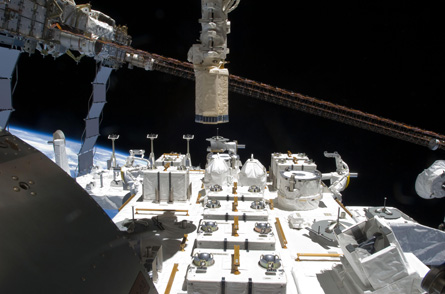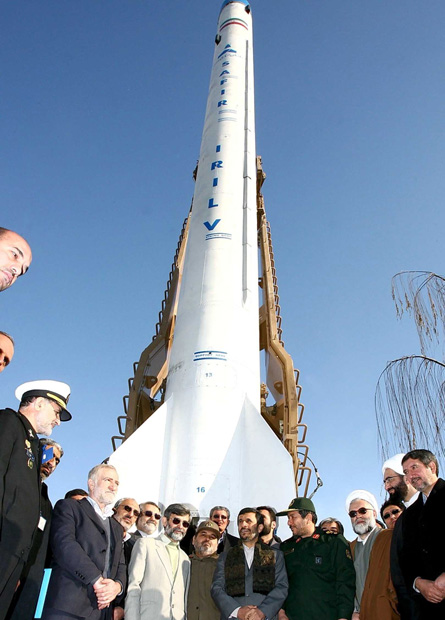From the International Space Station to orbital science and deep-space exploration, European, Russian and US space programmes represent the bulk of regular launch and operations activity. But new and rising space players are starting to shape their own agendas, with ambitious plans for scientific and commercial missions, supported by indigenous launcher and spacecraft development. We survey the main nations to watch in the coming decade.
CHINA
China has been launching payloads for decades but is pushing hard to improve its launch performance. "Ten years ago you could say comfortably their stuff was pretty primitive, and all derived from Russian designs and stuff cobbled together that they got here and there," says London consultant Gerry Webb of Commercial Space Technologies notes. "But [now] the Chinese are chucking a lot of money in to what they're doing."
In the past, Long March vehicles have suffered from a high rate of failure, but recently China has dramatically improved its launch and success rates. In 2011, China for the first time launched more rockets than the US, though remained behind in terms of total payload mass.
China's ambitions include launching both manned and unmanned payloads to the Moon and Mars. Webb reckons that near-term development of a new launch site at Hainan Island and the Long March 5 heavy vehicle will "give them new capabilities to build larger spacecraft or stations in space. It would begin also to give them greater capability for deep space missions and for military space missions, if they choose to go that direction."
 |
|---|
NASA Japan's Kibo laboratory module includes an exposed experiments area outside the ISS |
Despite its improving capabilities, China's future in space is uncertain. China's space programme is run by, and for the primary benefit of, its military, and success in other industrial sectors may not translate to space, says Clay Moltz of the US Navy's postgraduate school in Monterrey, California, and an expert on Asian space programmes. "China has not at all been a player in the export market. Their satellites are not particularly sought after, people are not using Chinese services to a great extent, we don't see any cutting-edge new technology coming from the Chinese space industry," says Moltz.
"That may change, but if some of the specific evidence in terms of patents and entrepreneurship are true regarding the space field today, I don't know that China is particularly well suited for that future environment."
Working in China's favour, though, is economic muscle. Nigeria, Venezuela, Bolivia - all resource-rich, cash-poor nations where China is peddling influence - have taken heavily discounted satellites and launches from China.
INDIA
India is pouring money into its space programme and openly discussing human spaceflight. Its launch vehicle of choice has been the Polar Satellite Launch Vehicle (PSLV), a relatively small but capable launcher that has been used extensively by the Indian government and, in a few cases, to loft payloads for paying foreign customers. Much of the craft, though evolving, has been based on foreign technology.
But India's ambitions hinge on attempts to develop its own rocket, the more powerful Geostationary Launch Vehicle (GSLV). TO date, five flights out of seven have ended in failure, including two in 2010 that used up the last available Russian-supplied cryogenic upper stages, which now must be replaced by an Indian-developed stage. A return to flight scheduled for April 2012 has been pushed back to December, leaving open the prospect of serious delays to plans for a GSLV-launched 2013 follow-up to the successful Chandrayaan Moon probe and a human flight in 2015 or 2016.
"In my view, India is likely to adopt compromise and collaboration with others to achieve its goals," says Moltz. "Put simply, I think it will be forced to back down on independent human spaceflight due to excessive costs, as well as risks."
Like China, India has found little success in commercialisation. Despite launching several commercial payloads on the PSLV, the programme remains largely government-driven, and there are no signs of imminent change.
SOUTH KOREA
Pressure from its missile-developing bellicose northern sibling has seen the Republic of Korea invest substantial sums in space programmes. Support has flagged after two successive failures of its KSLV launcher (with an Angara core stage purchased at great cost from Russia). Economic hard times don't help, either; the nation has renounced ambitions to human spaceflight and shut down its astronaut programme, but industry has found some success in building satellite components.
JAPAN
 |
|---|
Rex Features Iranian president Mahmoud Ahmadinejad welcomes Iran's first indigenous satellite launch in 2008 |
Japan is one of the largest contributors to the International Space Station and has sent several astronauts there. National launch vehicles H-IIA and B have suffered only a single failure but are not particularly attractive to commercial companies due to high production costs.
According to Moltz: "Having spoken to a lot of Japanese officials and experts over the past five or six years, they see their space programme as critical to their national identity, particularly because of its link to high technology.
"I think the Japanese are committed for the long haul to remaining a major space power, and the fact that they continue to invest in a human spaceflight programme is an indicator."
The Japanese climate change monitoring satellite GCOM-W1 (Shizuku) was launched successfully at 1639 GMT on 17th May 2012 by a Japanese H-2A202 launch vehicle. The lift-off took place at Japan's main launch site at Tanegashima. Also aboard was the South Korean Earth observation satellite Kompsat 3 and two small satellites: the Houryuu 2 (aka Houryuu 2) amateur radio satellite and the experimental satellite SDS 4.
INDONESIA
Indonesia has pledged to develop a launch site and series of launch vehicles. The site, at least, looks likely to come off and could prove commercially attractive given its position on the equator, the ideal latitude for adding the Earth's rotational momentum to a rocket's thrust. The launch vehicle programme is progressing slowly, with no orbital launches visible on the horizon, but the government consistently proclaims an interest.
BRAZIL
The South American giant is the nation to watch outside Asia. A deadly 2003 accident virtually halted launch vehicle development, but the government has, in public, remained committed to building a series of rockets called Cruzeiro do Sul. In the meantime, Brazil has nearly finished building the Alcantara spaceport, from which a first Ukrainian-built Cyclone-4 rocket is scheduled for launch in early 2014.
IRAN
Unlike North Korea, a technology partner that uses its space programme as a thin disguise for missile development, Iran has a true space programme and has successfully sent three satellites into orbit. Experiments have included live animal flights, nominally a prelude to a human spaceflight programme. After a 2011 rocket exploded, killing the monkey it was meant to carry to orbit, Iran suspended its live-animal launches but apparently remains committed to send a human into orbit by 2020.
Source: Flight International


























